Методическое пособие по английскому языку. Министерство общего и профессионального образования свердловской области
 Скачать 1.37 Mb. Скачать 1.37 Mb.
|
|
МИНИСТЕРСТВО ОБЩЕГО И ПРОФЕССИОНАЛЬНОГО ОБРАЗОВАНИЯ СВЕРДЛОВСКОЙ ОБЛАСТИ ГБОУ СПО СО «Екатеринбургский Автомобильно-дорожный колледж» Профессиональная ориентация как средство повышения эффективности обучения английскому языку Екатеринбург 2011 г. Содержание
Введение Настоящее учебно-методическое пособие рассчитано на преподавателей, работающих со студентами, которые обучаются по специальности «Техобслуживание и ремонт автомобиля». Учебное пособие имеет целью познакомить преподавателя с основными направлениями профессионально-ориентированного обучения английскому языку, разработанными с учетом Госстандарта и в соответствии с теми требованиями, которые предъявляются обществом к специалистам выбранной ими профессии. Пособие знакомит преподавателя и с основными темами, связанными с будущей специальностью студентов. К данному пособию имеется приложение, в котором содержится англо-русский словарь профессиональных терминов, упражнения, тексты и диалоги, тематика которых связана с автомобилем и организацией профессионального обучения. Данное приложение может быть использовано как преподавателями, так и студентами. 1. Необходимость профессионально-ориентированного обучения английскому языку Международные связи в бизнесе, промышленности, экономике, культуре, возросшие в последние десятилетия, предъявляют современным специалистам повышенные требования к обучению на иностранных языках. Базовые знания иностранного языка, получаемые в средних общеобразовательных учреждениях должны давать выпускникам начальную коммуникативную компетенцию. Реализация задач обучения сталкивается с рядом трудностей. Прежде всего, это: - недостаточная мотивация, которая обусловлена отсутствием устойчивого интереса студентов к изучению иностранного языка; - отсутствие соответствующей языковой среды, необходимой для развития устойчивых навыков владения элементами изучаемого иностранного языка; - недостаток методического обеспечения для успешного профессионально-ориентированного обучения иностранному языку. Студенты, обучающиеся по специальности «Техобслуживание и ремонт автомобиля», уже выбрали профессию и начинают свою деятельность (в том числе и учебную) в соответствии с теми требованиями, которые предъявляет общество к специалистам выбранной ими профессии. Это профессионализм, культура и умение работать с импортным оборудованием, быстро и правильно разобраться в инструкциях и документации на английском языке по устройству, эксплуатации и ремонту автомобильной техники, общаться в различных производственных ситуациях. Профессионально-ориентированное обучение английскому языку в колледже начинается со второго курса. На первом курсе завершается обучение иностранному языку по программе, соответствующей 10-11 классам средней общеобразовательной школы с некоторой корректировкой и сокращениями. Цели обучения иностранному языку можно конкретизировать следующим образом: - воспитание осознанного отношения к выбранной профессии и потребности в практическом использовании английского языка в будущей профессиональной деятельности; - развитие у студентов таких важных в профессиональном отношении познавательных процессов, как произвольное внимание, память, развитие интересов в профессиональной области, а также языковых способностей и речевой культуры; - подготовка студентов к участию в межкультурном и профессиональном общении в устной и письменной формах с учетом их интересов и профессиональных устремлений. 2. Тематика видов деятельности студентов Особое место в обучении уделено тематике следующих видов деятельности студентов: чтение, перевод, говорение, аудирование и письмо. Основу курса составляют следующие темы: - «Моя будущая профессия»; - «Мое учебное заведение»; - «Моя будущая карьера»; - «Виды транспорта»; - «История автомобильного транспорта»; - «Устройство и оборудование автомобиля»; - «Реклама, покупка автомобиля»; - «Путешествие на автомобиле»; - «Дорожные знаки, правила дорожного движения»; - «Прокат автомобиля»; - «Вождение автомобиля в различных странах»; - «Общение на заправочной станции»; - «На станции технического обслуживания»; - «Организация профессионального общения при ремонте автомобиля»; - «В поисках работы»; - «Заполнение анкет, составление резюме и заявления о приеме на работу»; - «Подготовка к собеседованию с работодателем»; - «Основы технического перевода»; - «Перевод профессионально-ориентированных текстов, составление аннотаций». Следует отметить, что многократное повторение одних и тех же либо варьируемых производственных ситуаций способствует достаточно прочному усвоению учебной информации. Студенты третьего курса обучения уже, как правило, имеют водительское удостоверение, ориентируются на дорогах, проходят практику. Сообщаемые студентам русские эквиваленты вводимых английских терминов соответствуют той терминологии, с которой они сталкиваются на занятиях по специальным предметам. Лексика и фразы–клише готовят студентов не только к профессиональному, но и межкультурному общению. Переход к очередному блоку информации, который предлагается студентам, должен происходить с учетом уже накопленного языкового опыта и, тем самым, доступен для понимания. Тематика предлагаемого курса подобрана таким образом, чтобы ввести студентов в обстановку будущей профессиональной деятельности. Так, например, прежде чем перейти к теме «На станции технического обслуживания» студенты изучают лексику и терминологию по устройству, ремонту и эксплуатации автомобиля, тренируют ее в различных упражнениях (см. приложение), систематизируют лексику в различных ситуациях, грамматических структурах, учатся составлять диалоги по определенному алгоритму: приветствие, основная часть, организация оплаты, пожелание счастливого пути, прощание. Далее студенты самостоятельно составляют диалоги. Приступая к работе над темой «Основы технического перевода» студенты уже обладают достаточным набором средств, позволяющих им целенаправленно подойти к этой работе и использовать в ней не только знания, навыки и умения в области английского языка, но и опыт, приобретенный на занятиях по специальным предметам. В результате английский язык приобретает для студентов личностный смысл, становится постоянно действующим фактором мотивации обучения. Профессионально-ориентированное обучение становится одним из действенных средств повышения эффективности обучения английскому языку. Приложение 1. Изучите лексику по теме «Автомобиль»
2. Изучите лексику по теме «Путешествие на машине»
3. Подберите русские эквиваленты к следующим словам 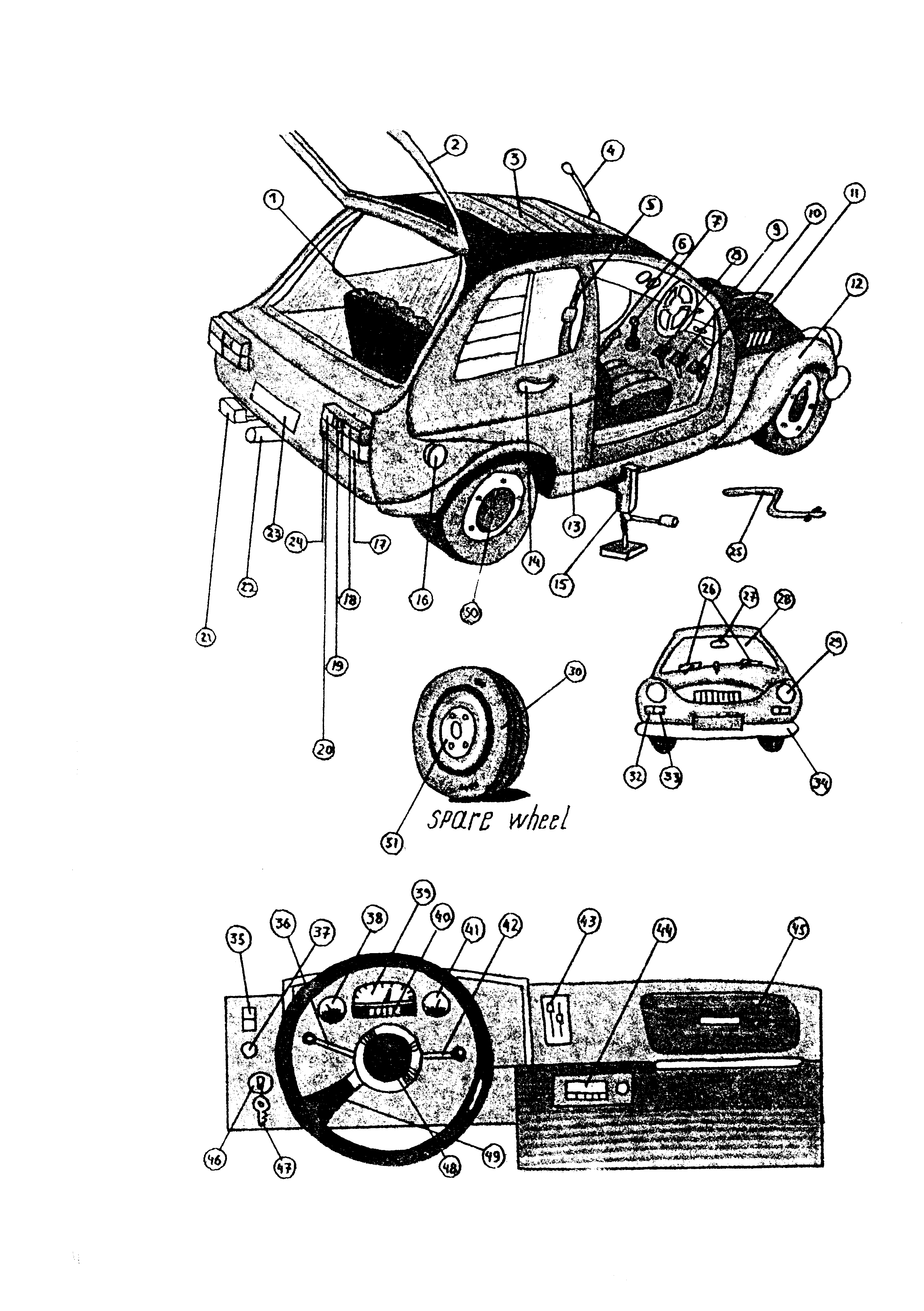 Car
4. Дайте русские эквиваленты следующим дорожным знакам 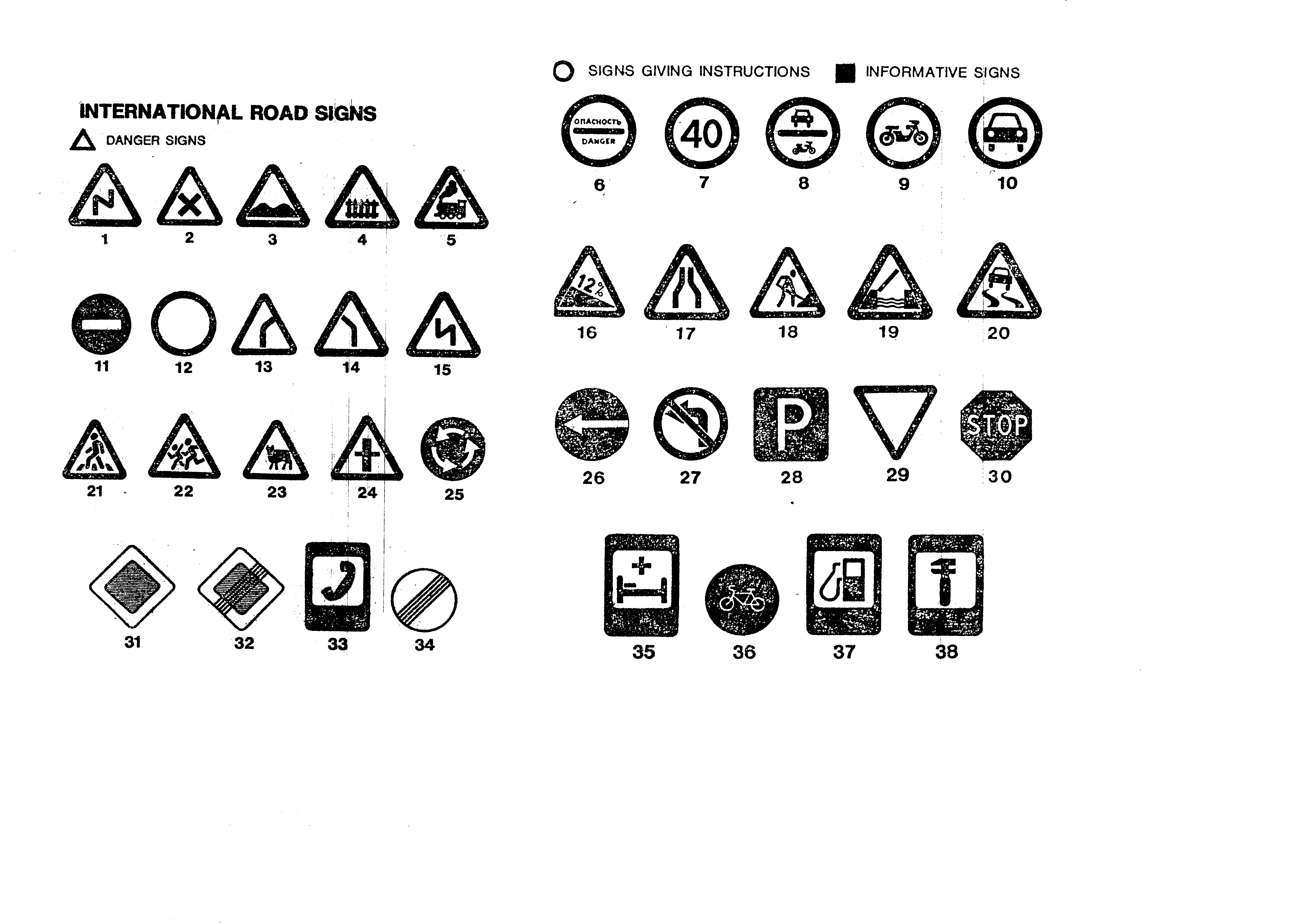
5. Подберите эквиваленты Vehicles: road transport
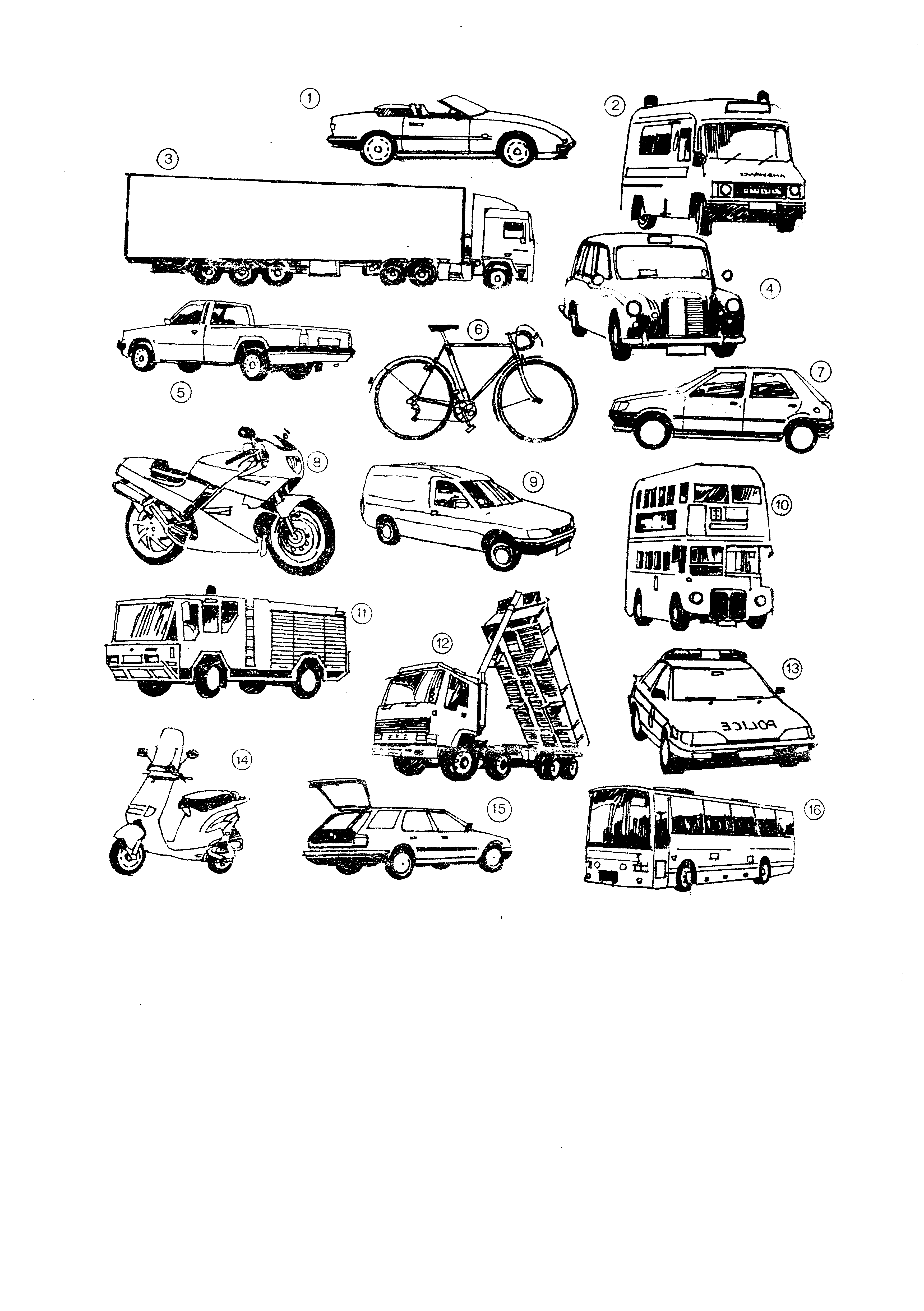 6. Подберите русские эквиваленты следующих слов Travelling by road
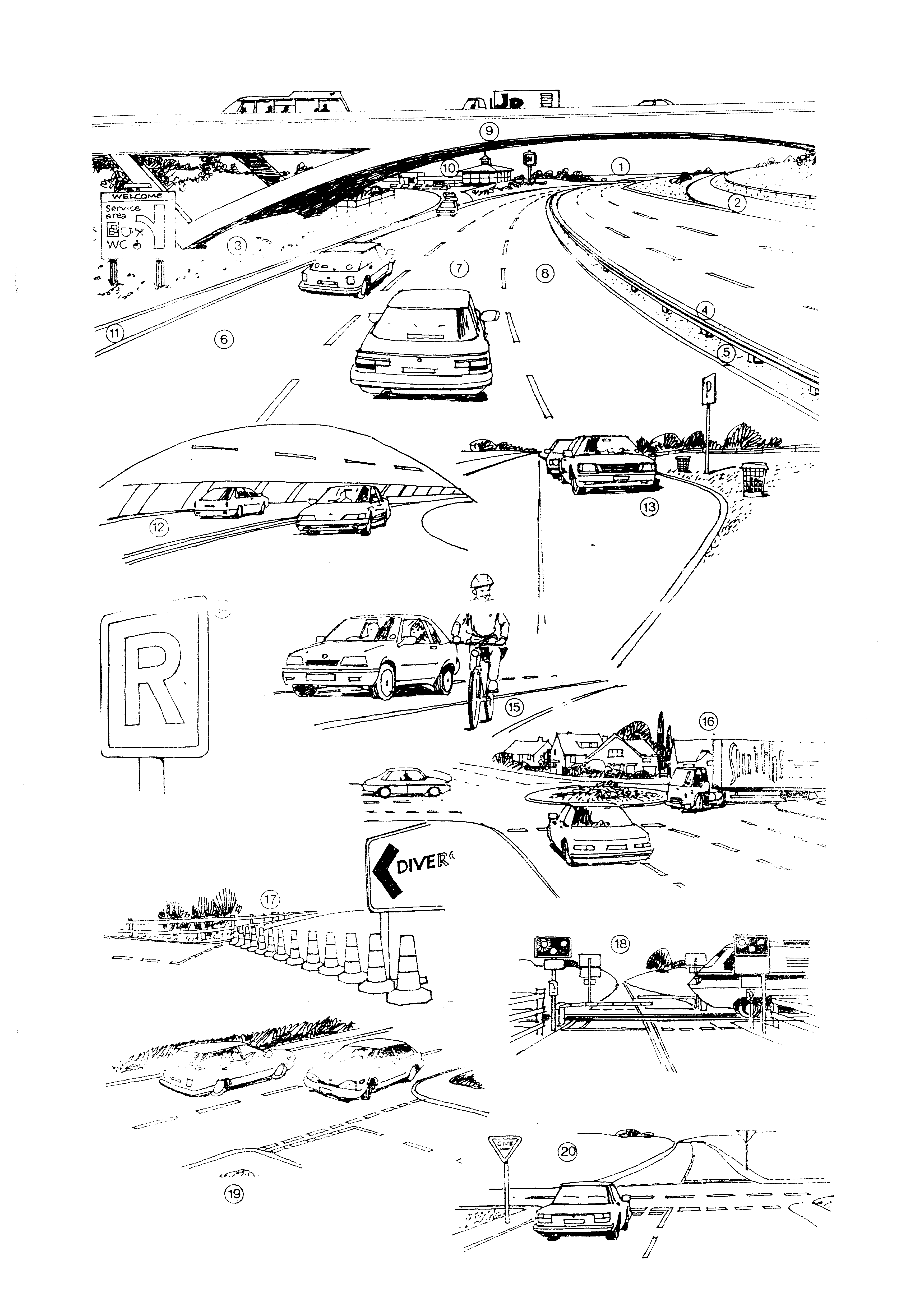 7. Выберите нужные слова и закончите следующие предложения 1. You enter or leave a motorway by a _____________________. 2. A __________________ is a space next to a main road where you can park your car out of the way of the other traffic. 3. A __________________ is a road that takes traffic round the edge of a town rather than through its centre. 4. A __________________ is a special route arranged for traffic when the normal route cannot be used. 5. The_________________ is the narrow piece of ground at the side of a road which is usually covered with grass. 6. People driving fast cars on motorways try to stay in the ______________ as much as possible. 7. An _________________ is a road which goes underneath another road or a railway line. 8. A __________________ is a place where a road and a railway line cross each other. It is usually protected by gates or barrier that shuts off the road while a train passes. 9. A __________________ is a place where roads join. 10. The ________________ is the area at the side of a motorway where you are allowed to stop if your car has broken down. 8. Глаголы по теме «Вождение автомобиля» Verbs to do with driving
9. Употребите нужный глагол в следующих ситуациях 1. He usually __________________ when he's driving. So if the sign says 90, then he never drives at more than kilometers per hour. 2. To ______________ means to drive backwards. 3. You usually ________________ to make a car slow down or stop. 4. When driving at night you should always ________________ when you see a car coming towards you. Otherwise you can blind the driver. 5. This car can ________________ from 0-100 kilometers per hour in under ten seconds. 6. To ________________ a car means to drive past it. 7. If a car ________________ another one, it pulls it along behind it, usually using a rope or a chain. 8. It is always very difficult to _______________ in the High Street, so we usually go to one of the large car parks near the station. 9. One of the most difficult things when learning to drive is to ______________ smoothly. That’s why many people prefer automatic cars. 10. When a car ______________ , it turns round in a half circle then drives back the way it came. 11. He was fined for ________________________. He was doing over 100 kilometers per hour in a built-up area where the limit was 50. 12. In Britain, when you reach a roundabout you should always __________________ to traffic on your right. 13. When a car ____________________, the engine stops suddenly, because there is not enough power or speed to keep it going. This can sometimes happen when you first drive a car on a cold, frosty morning. 14. He was late for the meeting because his car ________________ just outside Brighton. 15. It is very easy for a car to ____________________ and go out of control if the roads-are wet or icy. 10. Подберите русские эквиваленты Parts of car, Exterior
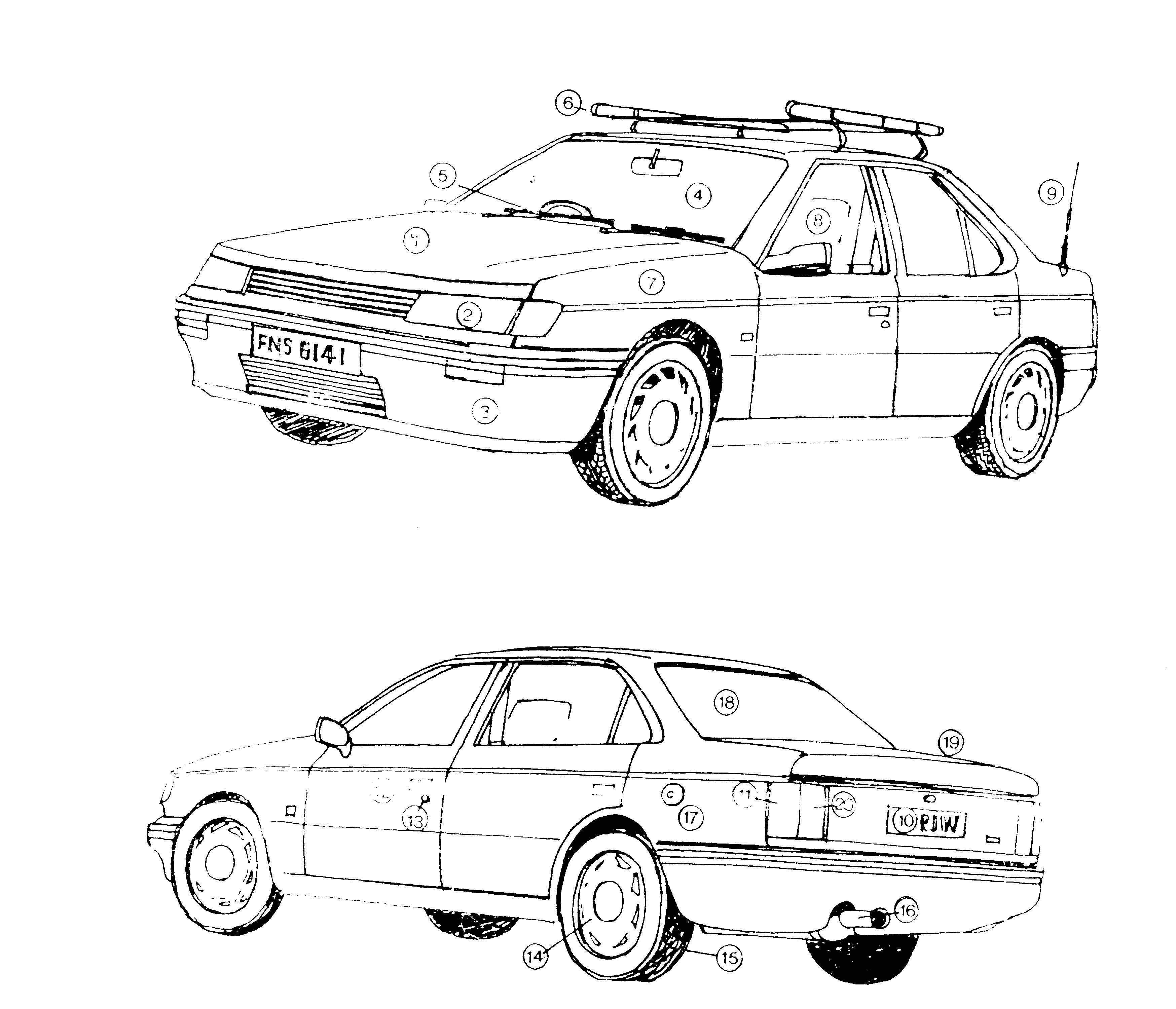 Interior
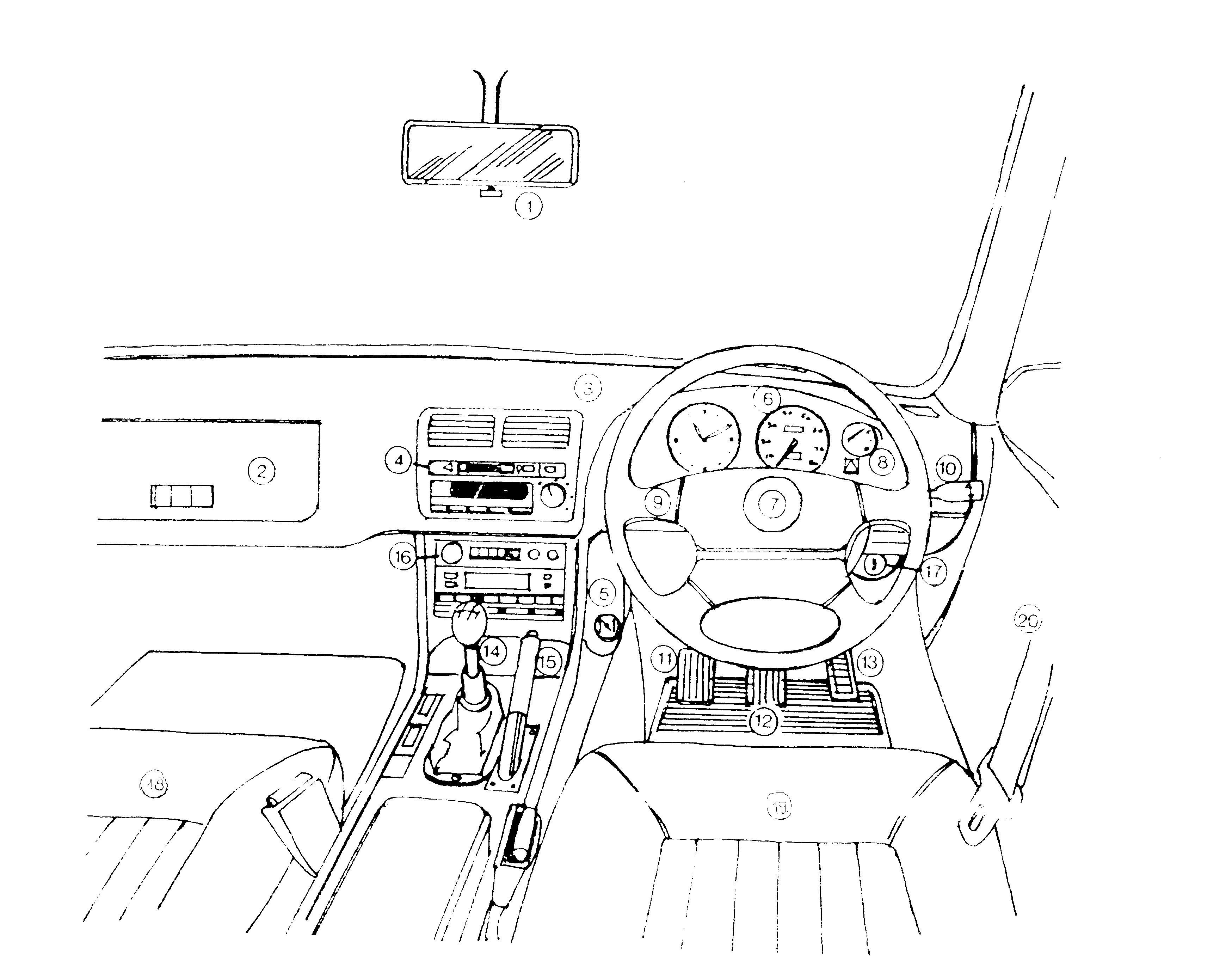 11. Прочитайте и переведите диалоги. Составьте собственные диалоги по образцу At the road inspection (разговор происходит между водителем и дорожным инспектором) A driver (D): Excuse me, inspector. Road inspector (RI): Yes, what can I do for you? D: Can you tell me the way to the motel, please? RI: Well, go ahead till the crossroads, then turn to the right. The motel is over there. D: Will you show me on the map, please? RI: Yes, certainly. Here you are, go this way. D: Thank you. RI: You’re welcome. Have a good journey. Good-bye. D: Bye. At the technical service station (разговор происходит на СТО между водителем и слесарем-ремонтником) A driver (D): Excuse me… A mechanic (M): Yes, that can I do for you/ Can I help you? D: I’ve been involved in an accident. Please, could you check the engine. M: Yes, of course… Yeah, the engine gets overheated and there is knocking in the engine. D: Can you repair the engine, please. I don’t mind waiting if you repair it soon. M: … the engine is O.K. Shall I change the oil in the engine? D: Yes, please do. Will you change the fuel pump? M: Sure. Anything else? D: No, thank you, sir. That’s all. Ho much is it? M: Well …, that’ll be $40. D: Here you are. Thank you. M: You’re welcome. Good day. Have a good journey. D: Bye. 12. Прочитайте и переведите диалог. Составьте собственный диалог по образцу. Trouble with the car (Поломка автомобиля) 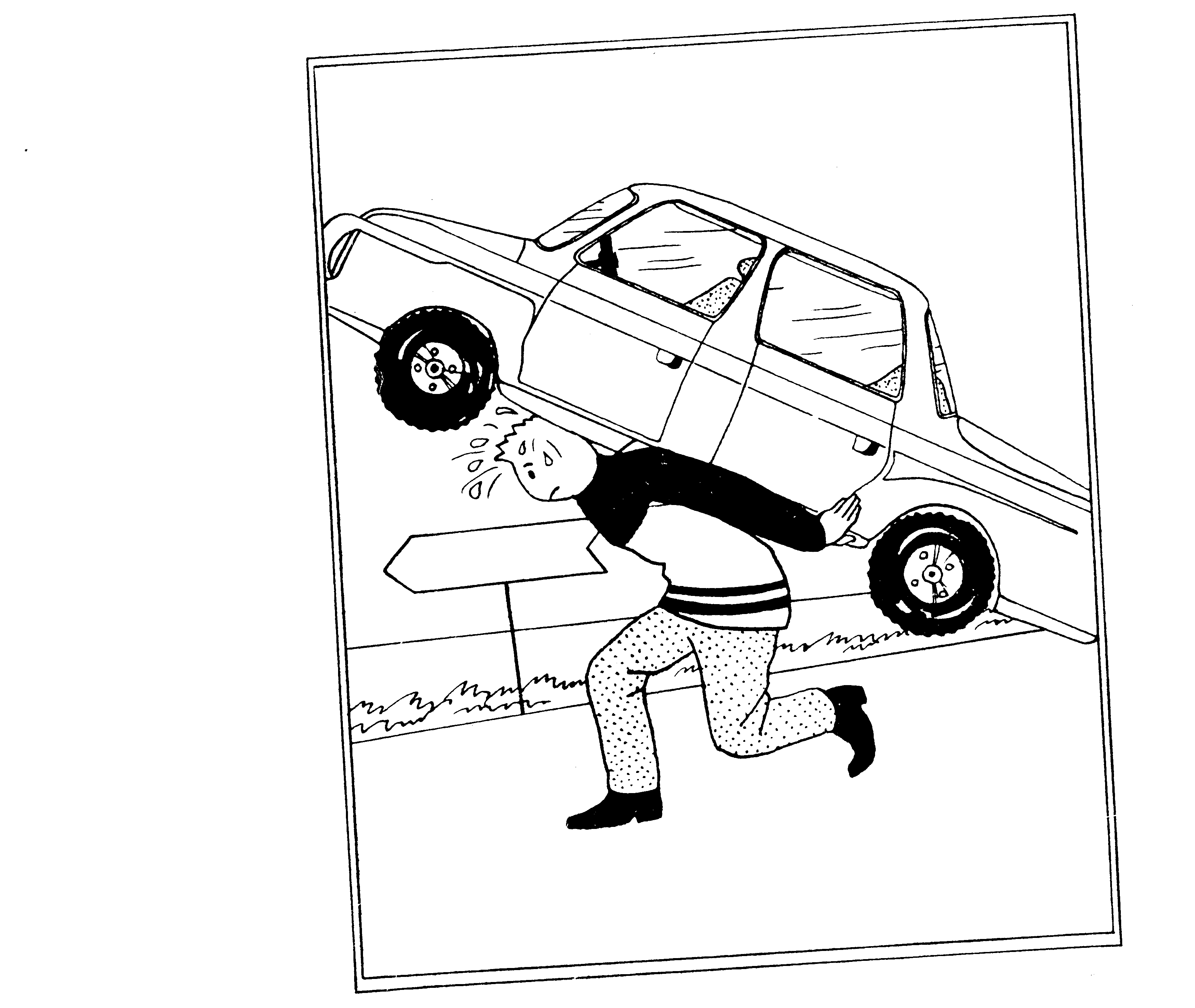 - Donald, I know you are a driver of long standing. I would like you to have a look at my car. - What's wrong with your car? - I don't know yet. I can't trace the fault. - Let me have a look. When did you have your plugs checked? - Three days ago. I thought I had run out of gas but the tank is half full. - Have a look at the petrol gauge once more. - All right. The tank is half full, as I have already said. - The carburettor is in order. The engine is misfiring. - So it is. - I guess the battery has run down. It needs recharging. - Too bad. - Don't get upset about it. It won't take you long to have your battery recharged. - Do you really think so? - I am sure of it. The other day I went to the gas station to have the brakes adjusted. The did it in no time. - Where is the gas station? - It's three miles south of the supermarket. Do you know the place? - I think so. In my car the brakes are a bit slack. I hope they can easily be adjusted. - I advise you to have the engine greased. - I'll follow your advice. Thank you, Donald. - Don't mention it, Paul. I'm very sorry I couldn't help you. - Well, you have helped me to trace the fault. I wish I had bought a new car... - Well, this one is much cheaper. It hasn't got too many miles on it. It's practically new. - I must admit it runs smoothly. It was in good condition when I bought it. - When was it? - A year ago. 13. Прочитайте и переведите диалог. Составьте собственный диалог по аналогии. Buying a Car (Покупка автомобиля). - Good morning. - Good morning, sir. May I help you? - I want to buy a new car. - Do you have anything special in mind? - It shouldn't be either an expensive car or a big one. - I see. What about a Honda? It's a good and rather inexpensive car. One of these cars is to the right of you. - How much is it? - 6,900 dollars. - I've got a large family. Therefore I'm looking for a mid-sized car. - If you are interested in a family car, the new Oldsmobile Delta 88 would be a good buy. - May I see it? - It's right this way. It's a very popular model. Let's take a look. Here we are. This car will get you an excellent gas mileage. Do you like the colour? - Yes. Dark blue is my favourite colour. What special features does the car have? - It has air conditioning, vinyl seat covers and a radio. - Is it economical to run? - Absolutely. It uses lighter material in the body, and it has a new type of carburator. Therefore your gas consumption will be cut down. Will you take a test drive to see how the car runs? - Okay. (They get in and the customer starts driving.) (Several minutes later. - I like the car. It's comfortable. The steering and the brakes work well. What about a trade-in? - I can estimate your old car. If you wish I can ask my assistant to drive in around the block. He could check out your car. He'll tell me what he thinks about a trade-in. - All right. There are the keys. My car is only four years old. I've not been in a single accident. I've taken good care of the car. - Well, let's go back to my office. Let's see what kind of deal I can expect. My decision depends on the price and the trade-in. As soon as you can give the your ultimate price, I'll talk it over with my family. I definitely need a new car. 14. Прочитайте и переведите диалог. Составьте собственный диалог по аналогии. At the Gas Station (На заправочной станции) - What can I do for you? --- Fill it up, please. - I guess your car takes unleaded gas.' - That's correct. (Attendant finishes pumping the gas.) - How much gas did it take? - Eight gallons. - Would you check the oil, please? (Attendant checks the oil.) -- It's below the full mark. - Please, fill it tip. - Will you wash the wind-shield for me? - Okay. Should I check the tyres too? - Please, do. (Attendand fills the tyres with air.) - 11 dollars even. (Pays for service.) - One more thing. What's the best way for me to get to interstate highway 87? - No problem, sir. (Explains the way to be taken.) - Thank you. Next week I'll come again for tune-up. I need a major one. - Our mechanic will be more than happy to help you. If possible, try to make an appointment with our mechanic - Of course, I'll try. 15. Прочитайте и переведите текст. TEXT l. TRANSPORT IN BRITAIN As in the rest of western Europe in recent years there has been a large increase in the use of private cars. During the same period travel by bus and coach fell from 25 per cent to 10 per cent of all transport and rail travel Dell from 15 per cent to just over 7 per cent. Britain, where the first railways were introduced, now has a declining rail system compared to other European countries: the Germans, the Italians and the French all travel by trains much more than the British. Britain also has the most expensive system of rail passenger travel in the European Community. Although the railways remained nationalized during the 1980s, the organization of bus and coach transport changed. Smaller buses appeared in towns and cities and there ways more competition between companies. As a result of better service and cheaper prices, the number of passengers travelling long distances by bus or coach began to increase again. Britain started building motorways, in the 1960s and there is a sophisticated system of major roads. However, the increase in cars and lorries, particularly in and around London and on the motorways, has caused a number of problems, with long-distance travelers. TEXT 2. RENT A CAR This is a car rental advertisement you would find in a phone book if you looked lip under Car Rentals in the Yellow Pages. The two largest American car rental companies Hertz and Avis, have offices all over the U.S., with counters at most airports and in many International cities. Other national car rental companies you can find at airports, such as_Thrifty, National, Budget or Dollar, have offices in other countries, too, so you may want to reserve a car through your travel agent in your own country. I order to rent a car, you have to have a mayor credit card, such as Master Card or Visa, or a credit card with the company itself. Without a credit card you may have to pay a very high deposit on the car. It is also possible to rent used cars rather than new cars. Rent-A-Junker and Ugly Duckling, which have offices in 40 states, are two of the many used car rental companies. Their rates are often lower and they don't always demand a credit card. Sometimes they have special offers that make the total cost of renting a car even lower. Answer the questions (Ответьте на вопросы). 1. If you don't have a credit card, will it be easier to rent a car from Hertz or Ugly Duckling? 2. Name some other rent-a-car companies. 3. If you want to drive a new car, which companies should you go to? 4. Which is cheaper at Ugly Duckling - the daily or the weekly rate? 5. Does Ugly Duckling have a special offer? Explain it. 6. You rent an ugly Duckling car and drive it for three days. Which rate applies? How much do you have to pay per mile? 7. You have the car it week and drive 800 miles. Do you have to pay more than $70? Why? 8. Does Ugly Duckling have a counter at the airport'? 9. How can you get to the Ugly Duckling city office from the airport? 16. Ответьте на вопросы анкеты. Узнайте, хороший ли вы водитель. Are you a good driver? 1. When driving in the fog do you listen to music over the radio? yes - c no - b I think about my work - a I don't listen to anything - d 2. Do you sometimes slow down when there is a beautiful girl on the road? no(never) - d sometimes to look at her - c 3. Do you try to overtake cars in front of you? yes - b no(never) -c sometimes - c 4. Do you talk while driving? yes - c no(never) -a sometimes – b 5. Do You sometimes use the driving mirror to see if your make up is all right? yes - c no – a 6. Can you drive well being hungry or thirsty? yes - a no – c 7. Do you consult the weather forecast before starting for a trip? yes - b sometimes - a never- d 8. Which is easier for you: to drive in a city or along a motorway? along a motorway – c in a city – a it makes no difference - b 9. What do you do if you have a flat tyre? I repair it myself – b I leave the car where it is – d I stop another car and ask for help – c 10. Do you stop to help a driver who has had an accident on the road? never – d always – a if it is a woman driver - c a - points; b - 4 points; c -1 point; d - 0 points 10 - 18 points. You are not a good driver yet. Look through the traffic rules. Try to be as careful as possible on the road. 18-26 points. You need perfection. Learn and you'll be a perfect driver. 26-30 points (or over). You are a good driver. Congratulations. 17. Составьте диалоги, используя следующие ситуации.
18. Прочитайте и переведите следующие шутки по теме «Вождение автомобиля». Jokes Smith: I’m really worried about my wife. She drives like lightning. Brown: Do you mean that she drives too fast? Smith: No, but she always strikes trees. * * * Smith: So your daughter has her driver’s license. How long did it take her learn to drive? Brown: About two and a half cars. Список литературы 1. Андрианова Л.Н., Багрова Н.Ю., Ершова Э.В. Курс английского языка для вечерних и заочных технических вузов. – М.: Высшая школа, 2000. 2. Богацкий И.С., Дюканова Н.М. Бизнес-курс английского языка. – Киев: Логос, 1997. 3. Бонами Д. Английский язык для технических училищ. – М.: Высшая школа, 1989. 4. Новицкая Т.М., Макеева В.М. Учебник английского языка для технических вузов. – М.: Высшая школа, 1983. 5. Паранский Л.М. Тексты для чтения на английском языке для учащихся средних профессионально-технических училищ. – М., 1985. 6. Парахина А.В., Чернухин А.Е. Учебник английского языка для техникумов. – М.: Высшая школа, 1985. 7. Солодский А.М. Англо-русский словарь для автомобилистов и автомехаников. – М.: Транспорт, 1999. |
